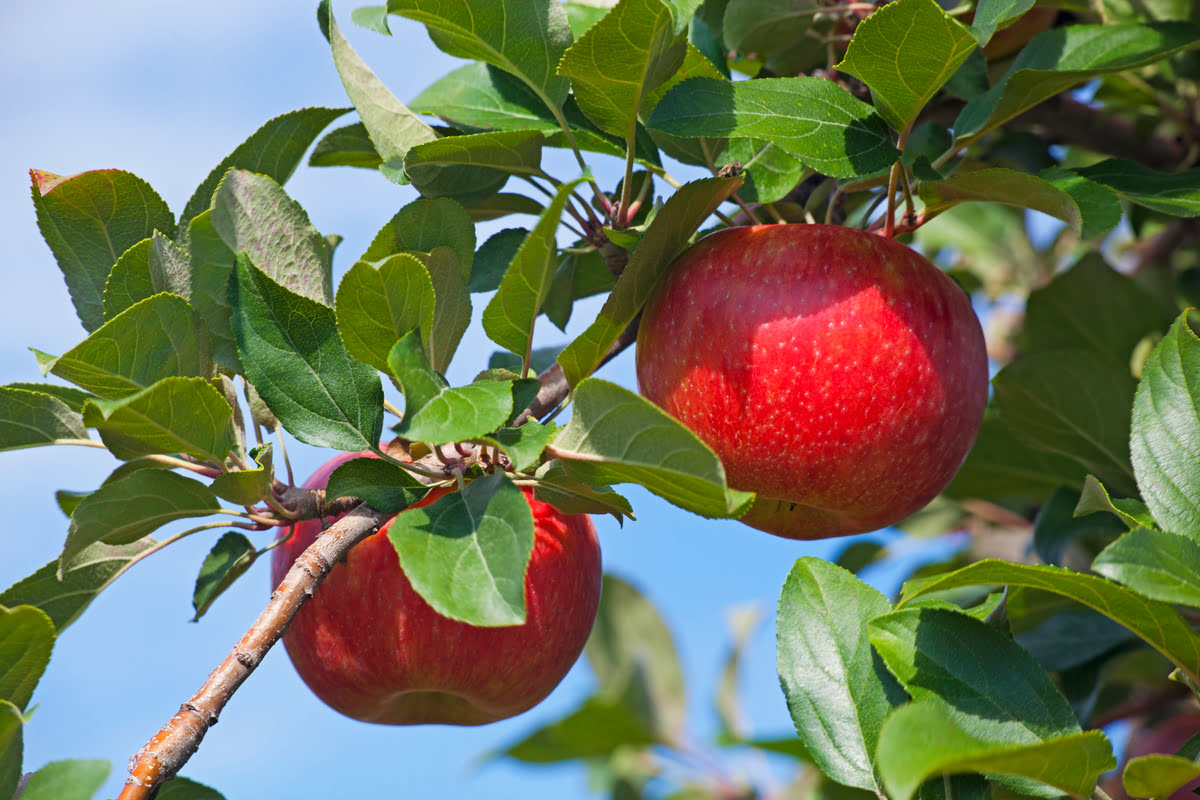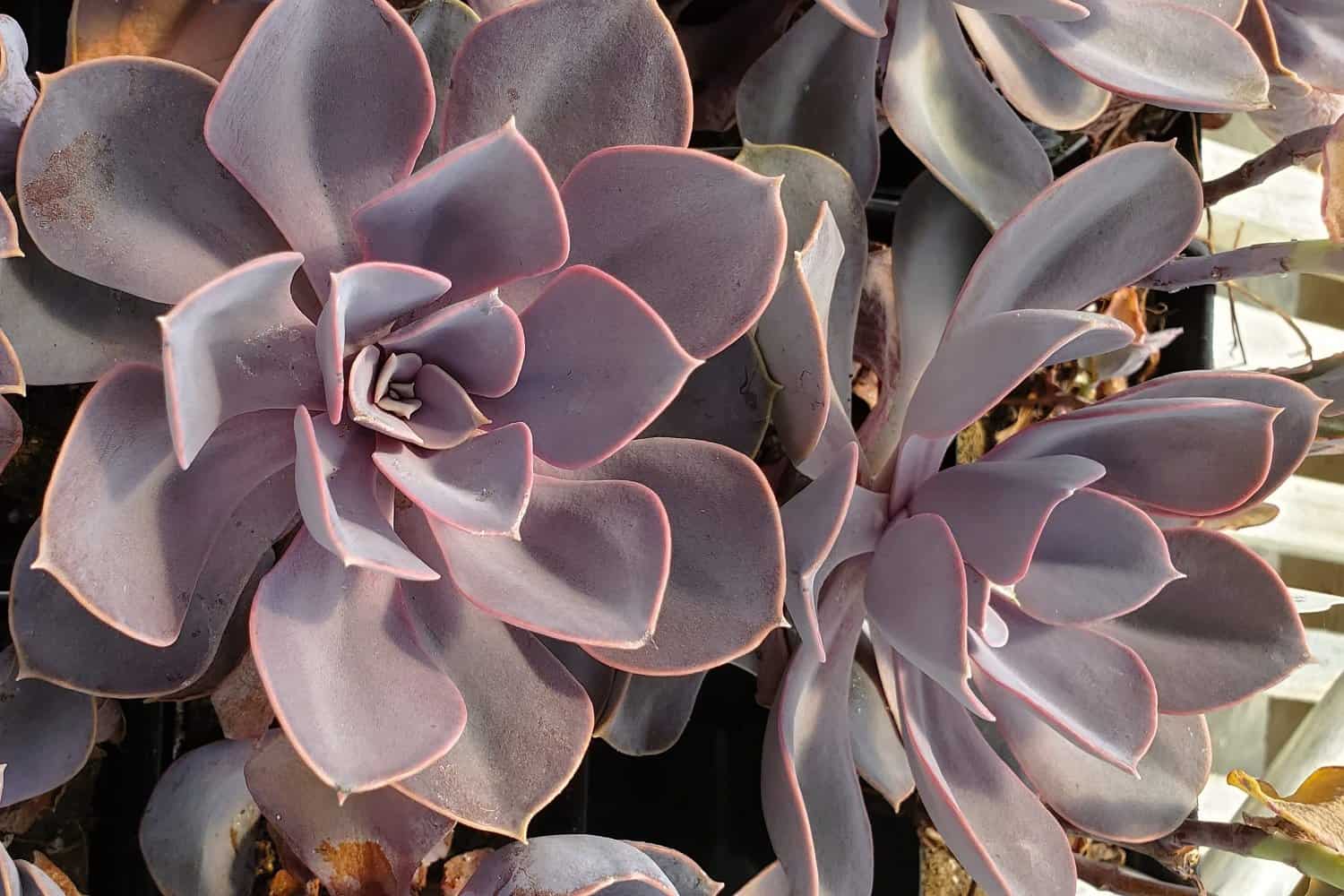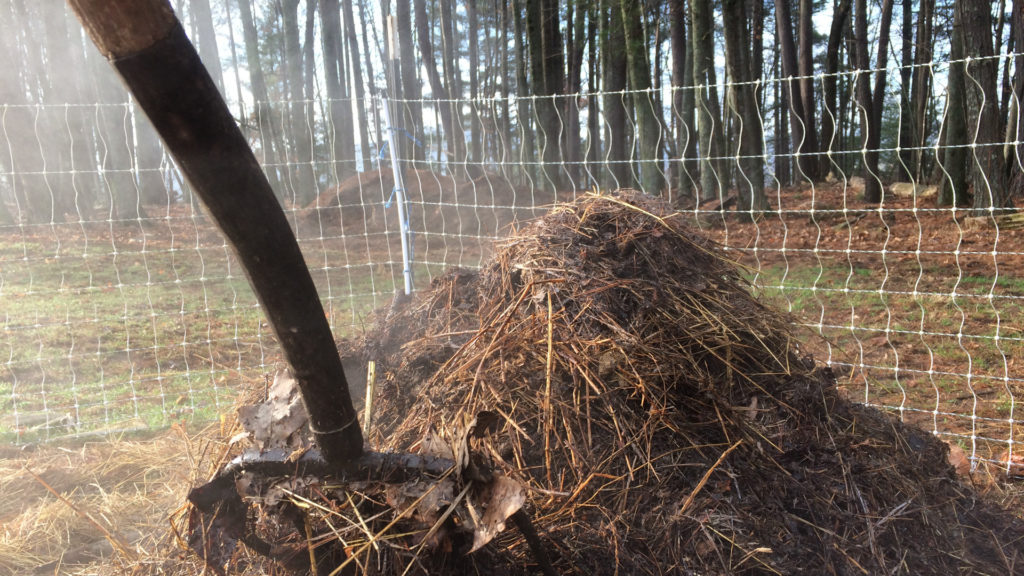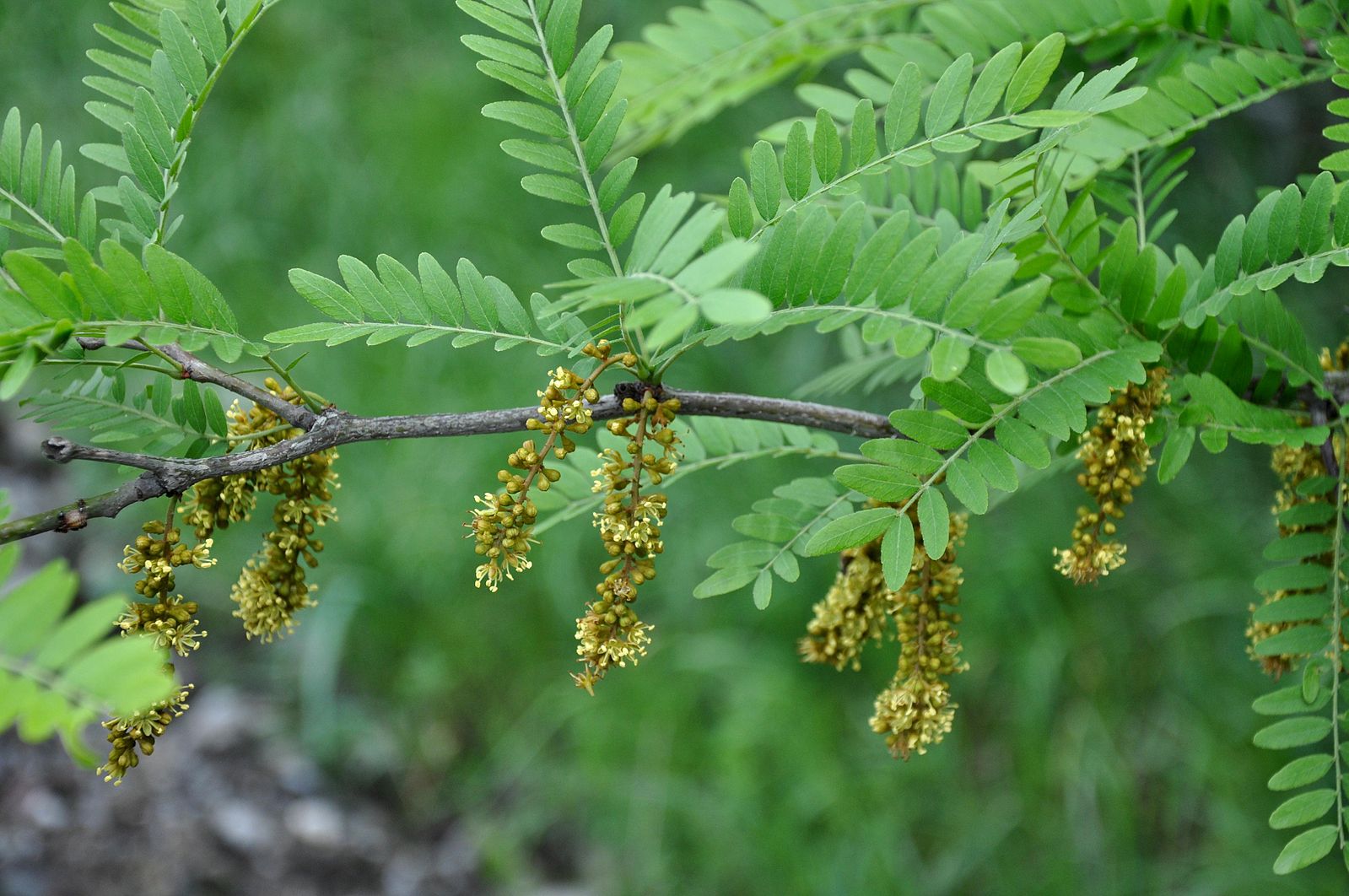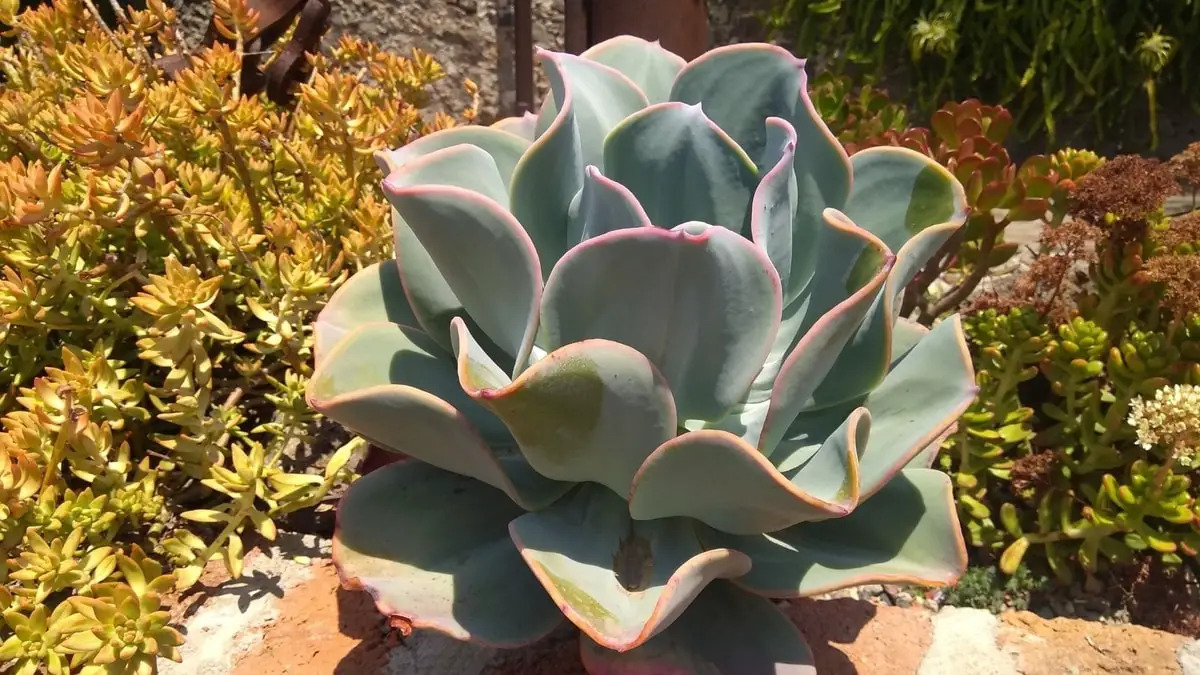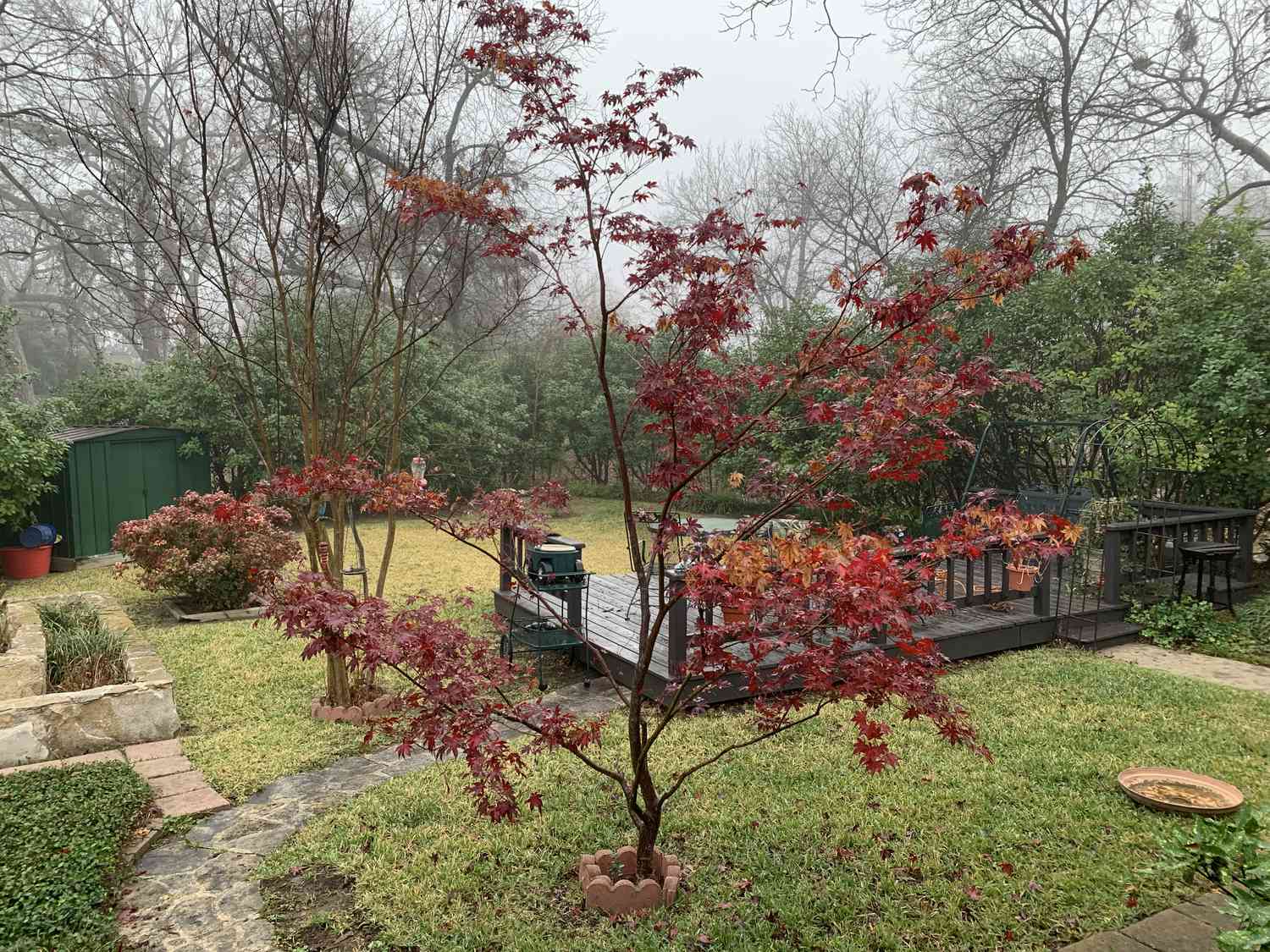Home>Gardening Techniques>Plant Care>How Fast Does Succulents Grow
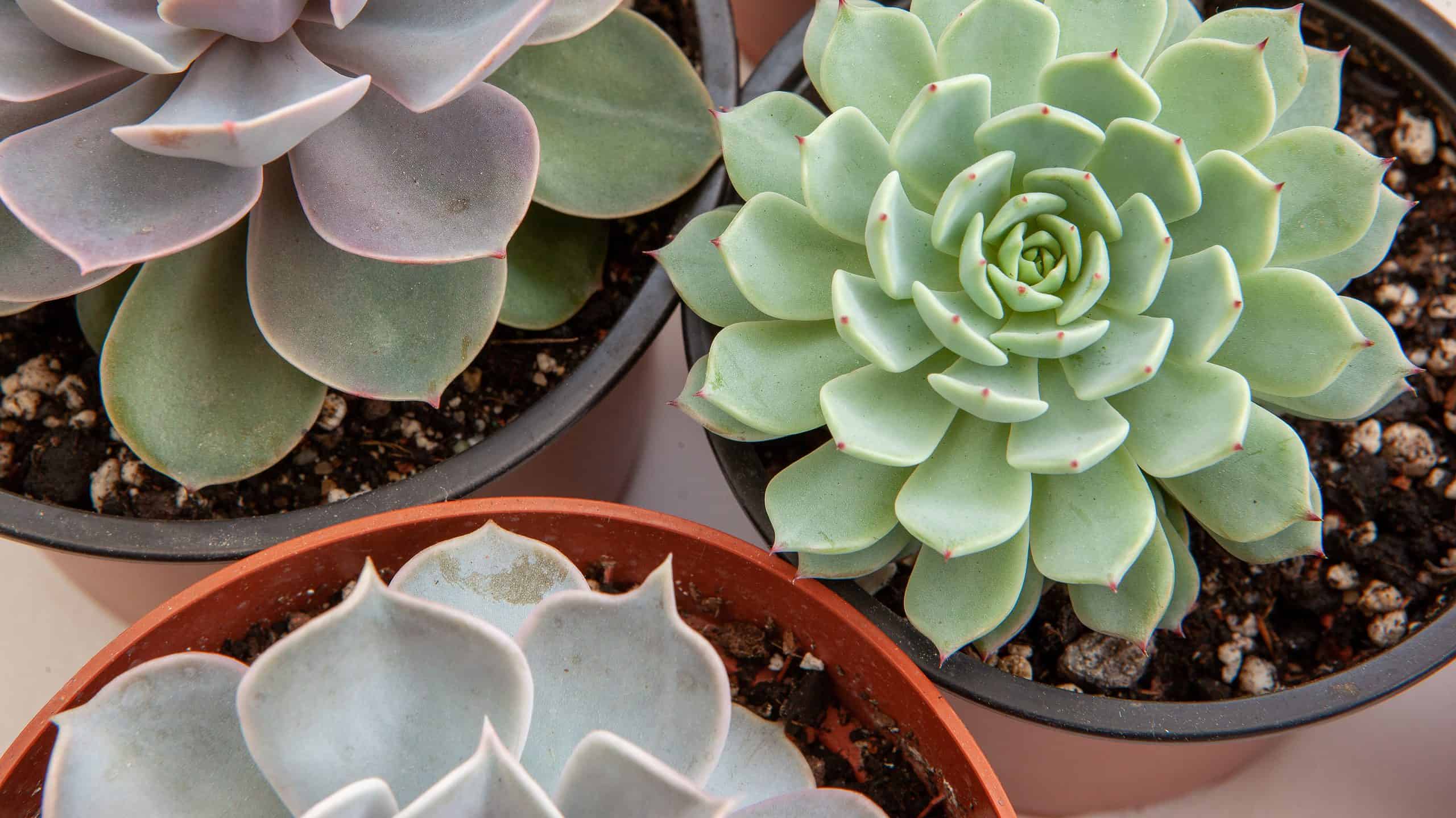

Plant Care
How Fast Does Succulents Grow
Modified: February 10, 2024
Discover the secrets of succulent growth with our expert plant care tips. Learn how fast succulents grow and how to ensure optimal growth for your plants.
(Many of the links in this article redirect to a specific reviewed product. Your purchase of these products through affiliate links helps to generate commission for Chicagolandgardening.com, at no extra cost. Learn more)
Table of Contents
Introduction
Welcome to the wonderful world of succulents! These fascinating plants have gained immense popularity in recent years due to their unique and eye-catching appearance, as well as their easy care requirements. Whether you are a beginner or a seasoned plant enthusiast, understanding the growth patterns and factors that affect succulent growth is essential for keeping these plants thriving.
Succulents are a diverse group of plants that have adapted to survive in arid environments. They are characterized by their thick, fleshy leaves and stems, which serve as water storage organs. Their ability to store water allows them to withstand prolonged periods of drought, making them a suitable choice for those who may forget to water their plants regularly.
While succulents are known for their resilience, it is still important to provide them with optimal growing conditions to ensure their health and vitality. Factors such as light, water, soil conditions, temperature, and nutrients all play a crucial role in the growth and development of succulents.
In this article, we will explore these factors in detail and provide you with valuable insights on how to optimize the growth of your succulent plants. Whether you’re a novice gardener looking to add some greenery to your home or an experienced plant lover seeking to expand your succulent collection, this article will serve as a comprehensive guide to understanding and promoting the growth of these unique plants.
Now, let’s delve into the fascinating world of succulent growth and discover how to create the perfect environment for your plants to flourish.
Factors Affecting Succulent Growth
Succulents are remarkably adaptable plants, but they do have specific requirements that need to be met in order to thrive. Understanding the factors that influence their growth will help you create the ideal conditions for your succulent collection. Here are the key factors that affect succulent growth:
- Light Requirements: Succulents are generally sun-loving plants and require bright light to thrive. Lack of proper light can lead to etiolation, where the plants become elongated and weak. Place your succulents in a location that receives at least six hours of direct sunlight per day. If you have them indoors, position them near a south or west-facing window to ensure they receive adequate light.
- Watering Needs: Succulents have adapted to survive in dry conditions and are highly efficient at water storage. Overwatering is one of the most common mistakes in succulent care. It is crucial to allow the soil to dry completely between waterings. When watering, ensure that water reaches the root zone, but avoid leaving the plant sitting in standing water, as this can lead to root rot. The frequency of watering will vary depending on the specific succulent species, climate, and time of year.
- Soil Conditions: Well-draining soil is essential for succulent growth. Use a special succulent or cactus mix, which consists of a porous blend with excellent drainage. This allows excess moisture to drain quickly, preventing root rot. You can also add perlite or pumice to regular potting soil to improve drainage. Avoid using heavy clay soils or those that retain too much moisture.
- Temperature and Climate: Succulents generally prefer warm temperatures between 60-80°F (15-27°C). However, they can tolerate a wide range of temperatures depending on the species. It is important to protect succulents from extreme cold or frost, as it can cause damage or even kill the plants. Some succulents are more cold-tolerant, while others thrive in hot desert-like conditions. Research the specific requirements of your succulent species to provide the ideal temperature and climate conditions.
- Nutrient Requirements: Succulents have relatively low nutrient needs compared to other plants. Feed them with a balanced fertilizer diluted to half strength during the growing season (spring and summer). Avoid over-fertilizing, as this can lead to weak growth or burn the roots. Remember to follow the manufacturer’s instructions for application.
By understanding and managing these key factors, you can create a healthy and vibrant environment for your succulents to thrive. Taking these factors into consideration will promote optimal growth, prevent common problems, and enhance the beauty of your succulent collection.
Light Requirements
Proper lighting is essential for the growth and development of succulents. These plants are native to sunny and arid regions, so they thrive in bright, direct light. Here are some key points to consider when it comes to meeting the light requirements of your succulents:
- Intensity: Succulents need a significant amount of light to thrive. Ideally, they should receive at least six hours of direct sunlight each day. Place them in a location where they can receive the maximum amount of light. If you have them indoors, position them near a south or west-facing window. If natural light is limited, you can supplement with grow lights specifically designed for plants.
- Duration: While succulents require adequate light, they also need a period of darkness for rest. Just like any plant, they require a proper light-dark cycle. Aim for around 12-16 hours of light and 8-12 hours of darkness. This will allow them to photosynthesize during the day and rest at night.
- Light Quality: The quality of light is just as important as the intensity and duration. Succulents thrive in full-spectrum light, which mimics natural sunlight. Full-spectrum light provides a balanced combination of blue, red, and white light, similar to the light spectrum outdoors. This type of light helps promote healthy growth and allows succulents to absorb the necessary wavelengths for photosynthesis.
- Seasonal Adjustments: Remember that light intensity and duration can change depending on the season. As the days get shorter and sunlight diminishes during the winter months, succulents may not receive as much light as they need. It’s important to adjust their location or provide supplementary artificial light to compensate for the reduced natural light.
- Signs of Inadequate Light: If your succulents are not receiving enough light, they will show signs of stress. Look out for elongated, stretched-out growth, pale or yellowing leaves, and leggy, weak stems. This is known as etiolation and is a clear indication that your succulents are not receiving adequate light. If you notice these signs, move your plants to a brighter location or provide additional light to help them recover.
By providing the proper light conditions, you can ensure that your succulents grow healthy and strong. Remember to observe their response to light and make adjustments as needed. With the right light, your succulents will thrive and display their unique and captivating forms.
Watering Needs
Watering is a crucial aspect of succulent care, as these plants have evolved to thrive in arid conditions with limited water availability. Understanding their specific watering needs will help prevent overwatering or underwatering, ensuring the health and vitality of your succulents. Here are some important points to consider when it comes to watering succulents:
- Frequency: Succulents do not require frequent watering like many other houseplants. In fact, overwatering is one of the most common mistakes when caring for succulents. The key is to allow the soil to dry out completely between waterings. The frequency of watering will depend on various factors such as the succulent species, climate, time of year, and potting media. As a general guideline, water your succulents when the top inch of soil is dry.
- Watering Technique: When watering succulents, it’s important to use a watering method that allows water to reach the root zone while avoiding waterlogging the plant. The best approach is to thoroughly drench the soil until water flows out of the drainage holes at the bottom of the pot. Allow any excess water to drain completely to prevent root rot. Avoid misting or lightly spraying the leaves, as this can encourage fungal diseases or promote shallow root growth.
- Seasonal Adjustments: Succulent watering needs can vary depending on the season. During their active growing period in spring and summer, succulents may require more frequent watering. In the dormant winter months, when growth slows down, water requirements decrease. Adjust your watering schedule accordingly, observing the moisture level of the soil and the overall appearance of the plants.
- Succulent Species Variations: Different succulent species have unique water requirements. Some succulents, like those from deserts, are highly drought-tolerant and prefer less frequent watering. Others may need more regular watering. Research and understand the specific needs of your succulent species to provide appropriate care.
- Signs of Underwatering and Overwatering: Understanding the signs of inadequate or excess watering is crucial for succulent care. Overwatered succulents may develop yellowing, mushy leaves, or signs of root rot. Underwatered succulents may show wrinkled leaves, a drooping appearance, or become overly compacted. It’s important to pay attention to these signs and adjust your watering routine accordingly.
By following proper watering practices and understanding your succulents’ specific needs, you can ensure their health and prevent common watering-related issues. Remember, it’s always better to underwater than overwater when it comes to succulents. Allow the soil to dry out between waterings to simulate their natural habitat and promote healthy growth.
Soil Conditions
Providing the right soil conditions is essential for the successful growth of succulents. These plants have unique needs when it comes to soil, as they require excellent drainage to prevent root rot. Here are some important points to consider when it comes to the soil requirements of succulents:
- Well-Draining Soil: Succulents thrive in soil that allows water to flow through quickly, preventing waterlogged roots. It is essential to use a well-draining soil mix specifically formulated for succulents or cacti. These mixes typically consist of a blend of components such as regular potting soil, perlite, pumice, or coarse sand. This combination ensures that excess water drains away, promoting healthy root growth.
- Potting Medium: When repotting or planting succulents, it is important to choose the right potting medium. Avoid using regular garden soil, as it tends to retain too much moisture and can suffocate the roots. Instead, opt for a fast-draining succulent or cactus mix available at most garden centers. You can also create your own mix by combining equal parts potting soil, perlite, and coarse sand for optimal drainage.
- Container Drainage: The pot or container that holds your succulents plays a crucial role in maintaining proper soil conditions. Ensure that the container has drainage holes at the bottom to allow excess water to escape. If you are using a decorative container without drainage holes, consider using a plastic nursery pot with drainage and placing it inside the decorative container. This allows for proper drainage while still maintaining an aesthetically pleasing display.
- Moisture Retention: Succulents prefer dry soil conditions, so it is important to avoid soil mixtures that retain too much moisture. While certain organic materials like peat moss or coconut coir can help retain moisture, excessive use can lead to overly damp soil. Balance is key to ensure sufficient drainage while providing some moisture retention to prevent rapid drying of the soil.
- Inspecting Root Health: Regularly inspect the roots of your succulents when repotting or checking their overall health. Healthy roots are firm, white, and show signs of active growth. If you notice roots that are mushy, discolored, or foul-smelling, it is an indication of overwatering or poor soil drainage. In such cases, trim away any rotting roots and repot the succulent in fresh, well-draining soil.
By providing the ideal soil conditions for your succulents, you are creating a healthy environment for them to thrive. Remember, well-draining soil is the key to preventing root rot and ensuring the overall health and longevity of your succulent collection.
Temperature and Climate
Temperature and climate play a significant role in the growth and well-being of succulent plants. These plants have adapted to thrive in various environments, from hot deserts to cooler mountain regions. Understanding the temperature requirements and climate preferences of your succulents is essential for their overall health and vitality. Here are some important points to consider:
- Temperature Range: Succulents generally prefer warm temperatures between 60-80°F (15-27°C). However, they can tolerate a wide range of temperatures depending on the species. Some succulents, like those from desert regions, can tolerate high temperatures exceeding 100°F (38°C). Others, such as those originating from mountainous regions, are more cold-tolerant and can withstand temperatures near freezing.
- Protecting from Extreme Temperatures: While succulents have some degree of temperature tolerance, it is crucial to protect them from extreme temperatures. Exposure to prolonged periods of intense heat or frost can cause irreversible damage or even kill your succulents. During heatwaves, provide shade or move your plants to a cooler location. In colder months, bring outdoor succulents indoors or protect them with frost cloths or other suitable insulation.
- Day and Night Temperature Differences: Mimicking natural temperature fluctuations can benefit succulents. In their native habitats, succulents often experience significant temperature differences between day and night. This temperature variation can help stimulate growth and enhance the coloration of certain succulent species. If possible, provide a moderate temperature decrease during the nighttime hours to simulate these conditions.
- Climate Considerations: Succulents have adapted to a variety of climates, from arid desert climates to humid tropical regions. Research the native climate of your specific succulent species to provide the most suitable conditions. For desert succulents, low humidity levels and good air circulation are essential. Tropical succulents may benefit from slightly higher humidity levels and more frequent watering.
- Temperature and Growth Rate: Temperature directly affects the growth rate of succulents. Warmer temperatures generally promote faster growth, while colder temperatures can slow down growth or induce dormancy. If you want to encourage rapid growth, provide higher temperatures during the plant’s active growing season. Cooler temperatures in the winter can help stimulate flowering in some succulent species.
By understanding and accommodating the temperature and climate preferences of your succulents, you can create an ideal environment for their growth and development. Keep in mind that different succulent species have different temperature requirements, so it’s essential to research and provide the specific conditions that each plant needs.
Nutrient Requirements
Succulents have relatively low nutrient requirements compared to other plants. Their ability to store water and nutrients in their leaves and stems allows them to survive in nutrient-poor environments. However, providing some essential nutrients can support their growth and overall health. Here are some important points to consider regarding the nutrient requirements of succulents:
- Balanced Fertilizer: While succulents do not require heavy feeding, they can benefit from a balanced fertilizer during the growing season. Choose a fertilizer specifically formulated for succulents or cacti, and dilute it to half the recommended strength. Applying the fertilizer every two to four weeks can provide the necessary nutrients for healthy growth.
- Nitrogen, Phosphorus, and Potassium (NPK): These three macronutrients are essential for succulent growth. Nitrogen promotes leaf and stem development, phosphorus supports root growth and flowering, and potassium enhances overall plant vigor and disease resistance. Look for a balanced NPK ratio, such as 10-10-10 or 14-14-14, to provide these essential nutrients to your succulents.
- Micro and Macronutrients: In addition to NPK, succulents require other essential micronutrients and macronutrients. These include calcium, magnesium, iron, zinc, manganese, and others. While these nutrients are required in smaller amounts, they are still important for healthy succulent growth. Some succulent fertilizers contain trace elements, or you can add a specific micronutrient supplement to ensure a well-rounded nutritional balance.
- Slow-Release Fertilizers: Another option for providing nutrients to succulents is to use slow-release fertilizers. These granules release nutrients gradually over time, supplying a steady nutrient source to the plants. Slow-release fertilizers can simplify the fertilization process and reduce the risk of over-fertilization. Follow the package instructions for the proper application rate.
- Observing Nutrient Deficiencies: Keep an eye out for signs of nutrient deficiencies in your succulents. Symptoms may include yellowing or discoloration of leaves, stunted growth, or overall poor vigor. Different nutrient deficiencies present with distinct visual cues. If you notice signs of nutrient deficiency, adjust your fertilizer routine or consider adding specific nutrients to address the issue.
Remember to follow the manufacturer’s instructions when fertilizing your succulents to avoid overfeeding, which can lead to nutrient burn or other issues. Providing a balanced and appropriate nutrient supply will ensure that your succulents receive the essential elements they need for healthy growth and beautiful displays.
Growth Rate Variations Among Succulent Species
Succulents come in a wide variety of species, each with its own unique growth patterns and characteristics. While succulents are generally known for their relatively slow growth compared to other plants, there can be significant variations in growth rate between different species. Understanding these growth rate variations is essential for properly caring for and managing your succulent collection. Here are some important points to consider:
- Fast-Growing Succulents: Some succulent species have a reputation for their relatively fast growth. These succulents often display vigorous growth, producing new leaves or offsets at a rapid pace. Examples of fast-growing succulents include certain Aloe species, Echeveria varieties, and Sedum plants. These succulents may require more frequent repotting and space to accommodate their growth.
- Slow-Growing Succulents: On the other end of the spectrum, there are succulents that have a slower growth rate. These succulents tend to exhibit a more restrained growth pattern, with minimal leaf production and slower spread. Examples of slow-growing succulents include some Haworthia species, Lithops, and certain Agave varieties. These succulents require less frequent repotting and can thrive in smaller containers.
- Growth Rate Factors: Several factors influence the growth rate of succulent species. These factors include light intensity, temperature, watering frequency, and nutrient availability. Providing optimal conditions that meet the specific requirements of each succulent species can help stimulate and maintain their desired growth rate. However, it’s important to note that even within a species, individual plants may have variations in growth rate due to genetic factors or environmental influences.
- Propagation and Growth Rate: The method of propagation can also impact the growth rate of succulent plants. Offsets or pups, which are baby plants that naturally form around the base of the parent plant, typically inherit the growth rate of the parent. However, certain propagation methods, such as leaf cuttings or stem cuttings, may result in slower growth initially as the new plants establish roots and develop into mature specimens.
- Patience and Time: While succulents may not exhibit rapid growth like some other plants, their steady and incremental growth can be rewarding to observe over time. It’s essential to exercise patience and allow the succulents to grow at their own pace. Remember that succulents are known for their longevity and can provide years of enjoyment and beauty as they gradually fill out and mature.
By understanding the growth rate variations among succulent species, you can adapt your care routine accordingly and appreciate the unique characteristics of each plant. Whether your succulents are fast growers or slow growers, each one has its own charm and contributes to the overall beauty of your succulent collection.
Propagation Methods
Propagation is an exciting aspect of succulent care that allows you to expand your collection and share the beauty of these plants with others. Succulents can be propagated through various methods, each offering its own advantages and challenges. Here are some common propagation methods used for succulents:
- Leaf Propagation: Leaf propagation is a popular method for succulents that have fleshy leaves. Gently remove a healthy leaf from the parent plant, making sure to include the base intact. Allow the leaf to dry for a couple of days until a callus forms at the cut end. Plant the leaf in well-draining soil or a succulent/cactus mix, burying the cut end slightly. Over time, roots will develop, and a new plant will emerge from the base of the leaf.
- Stem Cutting: Stem cuttings work well for succulents with a more pronounced stem. Using a clean and sharp blade, cut a section of the stem just below a node or joint. Allow the cutting to dry and form a callus for a few days. Then, plant the cutting in a well-draining soil mix, burying the cut end. Keep the soil lightly moist until roots develop, and the cutting establishes itself as a new plant.
- Offset Division: Many succulent species produce offsets or pups around the base of the parent plant. These offsets can be carefully separated from the parent and potted individually. Gently remove the offset, ensuring it has its own set of roots. Plant it in a separate container with well-draining soil. Offset division is an excellent way to propagate clumping succulents such as Aloe, Agave, or Haworthia.
- Seed Propagation: While seed propagation can be a slower process, it allows you to grow succulents from scratch and discover new variations. Collect seeds from mature succulent flowers and sow them in a well-draining seed-starting mix. Ensure the seeds have good soil contact, but avoid burying them too deeply. Keep the soil consistently moist but not waterlogged. With patience and proper care, the seeds will germinate, and tiny succulent seedlings will emerge.
- Grafting: Grafting is a more advanced and specialized propagation method. It involves joining a cutting or a scion from one succulent species with the rootstock of a separate plant. Grafting allows you to combine the unique characteristics of different succulents and achieve increased growth or unique aesthetics. This method requires more expertise and attention to detail, and it is often used for rare or challenging succulent species.
Experimenting with these propagation methods can be a rewarding experience as you witness new plants take root and grow. Each method offers different advantages and success rates, so feel free to explore and find what works best for you and your succulent collection.
Common Mistakes to Avoid
While succulents are generally resilient and low-maintenance plants, there are some common mistakes that can hinder their growth and overall well-being. By avoiding these mistakes, you can ensure the health and longevity of your succulent collection. Here are some common mistakes to watch out for:
- Overwatering: Perhaps the most common mistake is overwatering succulents. They are adapted to survive in arid conditions and are prone to root rot if kept consistently moist. Allow the soil to dry out between waterings and develop a watering routine that matches the specific needs of your succulents and the environment they are in.
- Using Incorrect Soil: Succulents require well-draining soil to prevent waterlogged roots. Using heavy soil or a mix that retains too much moisture can lead to root rot. Choose a well-draining succulent or cactus mix, or create your own by adding perlite or pumice to regular potting soil.
- Insufficient Light: Adequate light is crucial for healthy succulent growth. Insufficient light can cause stretching or etiolation, where the plants become weak and leggy. Ensure your succulents receive at least six hours of direct sunlight per day. If indoor, position them near a south or west-facing window, or provide supplementary grow lights.
- Overfertilizing: Succulents have lower nutrient requirements compared to other plants. Overfertilizing can lead to nutrient burn and cause damage to the plants. Follow the recommended fertilizing schedule and dilute the fertilizer to half strength to avoid overfeeding your succulents.
- Ignoring Temperature Extremes: Extreme temperatures can harm succulents. Protect them from prolonged exposure to high heat or frost by providing shade or moving them to a more suitable location. Be mindful of temperature fluctuations and adjust your care routine accordingly to ensure their well-being.
- Not Knowing the Specific Needs of Each Species: Different succulent species have varied care requirements. It’s important to research and understand the specific needs of each species in your collection. This includes factors such as light requirements, watering needs, temperature preferences, and growth habits. Tailoring your care routine to each succulent will help them thrive.
- Overcrowding and Lack of Space: Succulents need space to grow and spread. Overcrowding can lead to competition for resources and hinder their growth. Ensure that each plant has enough space to allow for proper air circulation and prevent overcrowding. Regularly repot or thin out your succulents to give them the room they need.
By avoiding these common mistakes and providing the proper care, you can foster a thriving succulent collection. Succulents are incredibly adaptable, and with a little attention to their specific needs, they will reward you with their unique beauty and resilience.
Conclusion
In conclusion, understanding the factors that influence succulent growth is crucial for successfully caring for these unique plants. By providing the right amount of light, watering appropriately, optimizing soil conditions, and considering temperature and climate preferences, you can create an ideal environment for your succulent collection to thrive.
Remember that different succulent species have varying growth rates, nutrient requirements, and propagation methods. Taking the time to research and understand the specific needs of your succulents will result in healthier plants and more rewarding experiences as you watch them flourish.
Avoiding common mistakes such as overwatering, using incorrect soil, insufficient light, overfertilizing, ignoring temperature extremes, neglecting species-specific needs, and overcrowding will help you circumvent potential issues and promote the well-being of your succulents.
Succulents offer beauty, diversity, and versatility. With their ability to thrive in challenging conditions and their visually striking forms, they have captured the hearts of many plant enthusiasts. Whether you are just starting your succulent journey or have been caring for these plants for years, continued learning and attention to their specific requirements will ensure their continued growth and success in your care.
So, embrace the fascinating world of succulents, experiment with different species, and enjoy the rewards of nurturing these remarkable plants. With a little knowledge, care, and creativity, your succulent collection will bring joy and beauty into your home or garden for years to come.
